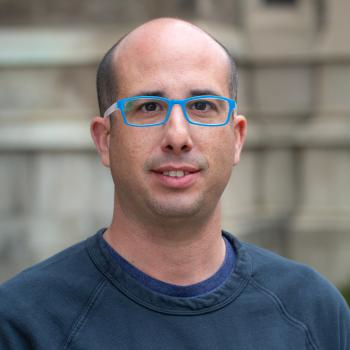
搜索网站、位置和人员

新闻与活动 活动信息
西湖名师论坛第一百零三期 | Aaron D. Gitler: Expanding Mechanisms and Therapeutic Targets for Neurodegenerative Diseases
时间
2021年8月17日(周二)
上午10:00-11:30
地点
西湖大学云栖校区3号楼312会议室
主持
受众
全体师生
分类
学术与研究
西湖名师论坛第一百零三期 | Aaron D. Gitler: Expanding Mechanisms and Therapeutic Targets for Neurodegenerative Diseases
时间:2021年8月17日(周二)上午10:00-11:30
Time:10:00-11:30 AM, Tuesday, August 17th, 2021
地点:西湖大学云栖校区3号楼312会议室
Venue: Room 312, Building 3, Yunqi Campus
主持人:西湖大学生命科学学院讲席教授 于洪涛
Host: Dr. Hongtao Yu, Chair Professor of School of Life Sciences, Westlake University

主讲人/Speaker: Aaron D. Gitler, Medicine Basic Science Professor, Professor of Genetics, Stanford University
Dr. Aaron Gitler is professor of genetics at Stanford University. One of his most pivotal discoveries was the identification of a major genetic contributor to amyotrophic lateral sclerosis (ALS). Aaron’s team recently demonstrated that inhibiting this gene markedly extends lifespan and improves motor performance in a mouse model of ALS, setting the stage for testing this therapeutic approach in human ALS. He has also uncovered the mechanism by which mutations in other genes cause ALS and has discovered a broad role for RNA-binding proteins in ALS and related human neurological diseases. Prior to Stanford, he was an assistant professor of cell and developmental biology at the University of Pennsylvania. Aaron holds a B.S. from Penn State University and did his Ph.D. studies on cardiovascular development in the laboratory of Dr. Jonathan Epstein at the University of Pennsylvania. He performed his postdoctoral training with Dr. Susan Lindquist at the Whitehead Institute for Biomedical Research and Massachusetts Institute of Technology. Aaron was a Pew Scholar in the Biomedical Sciences, a Rita Allen Foundation Scholar, and a recipient of the NIH Director’s New Innovator Award and the NIH NINDS Research Program Award.
报告题目/Title:
Expanding Mechanisms and Therapeutic Targets for Neurodegenerative Diseases
讲座摘要/Abstract:
My goal is to discover the cellular and molecular mechanisms by which protein aggregates contribute to neurodegeneration and to harness these mechanisms to devise novel therapeutic strategies. We use the baker’s yeast, Saccharomyces cerevisiae, as a simple, yet powerful, model system to study the cell biology underpinning protein-misfolding diseases, which include Alzheimer’s disease, Parkinson’s disease, and amyotrophic lateral sclerosis (ALS). We are focusing on the ALS disease proteins TDP-43 and FUS/TLS and have generated yeast models to define mechanisms by which these proteins cause ALS. Because these proteins aggregate and are toxic in yeast, we have used these yeast models to perform high-throughput genomewide modifier screens to discover suppressors and enhancers of toxicity. Launching from the studies in yeast, we have extended our findings into animal models and even recently into human patients. For example, we discovered mutations in one of the human homologs of a hit from our yeast TDP-43 modifier screen in ALS patients. Mutations in this gene are relatively common (~5% of cases) making it one of the most common genetic risk factors for ALS discovered to date. These screens are also providing new and completely unexpected potential drug targets, underscoring the power of such simple model systems to help reveal novel insight into human disease.
讲座联系人/Contact:
科技合作部 毕老师
biguanying@westlake.edu.cn

















